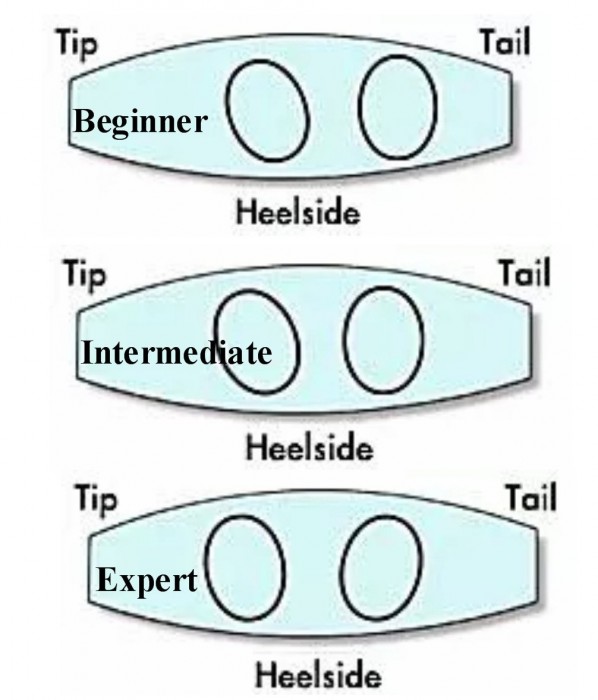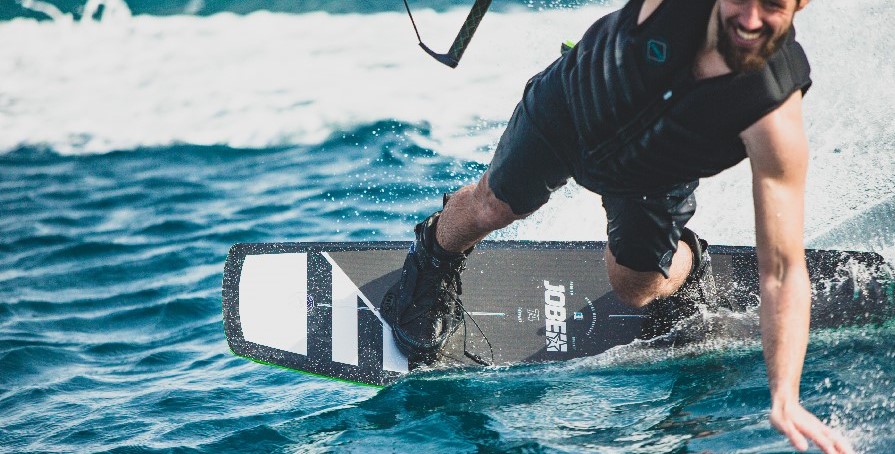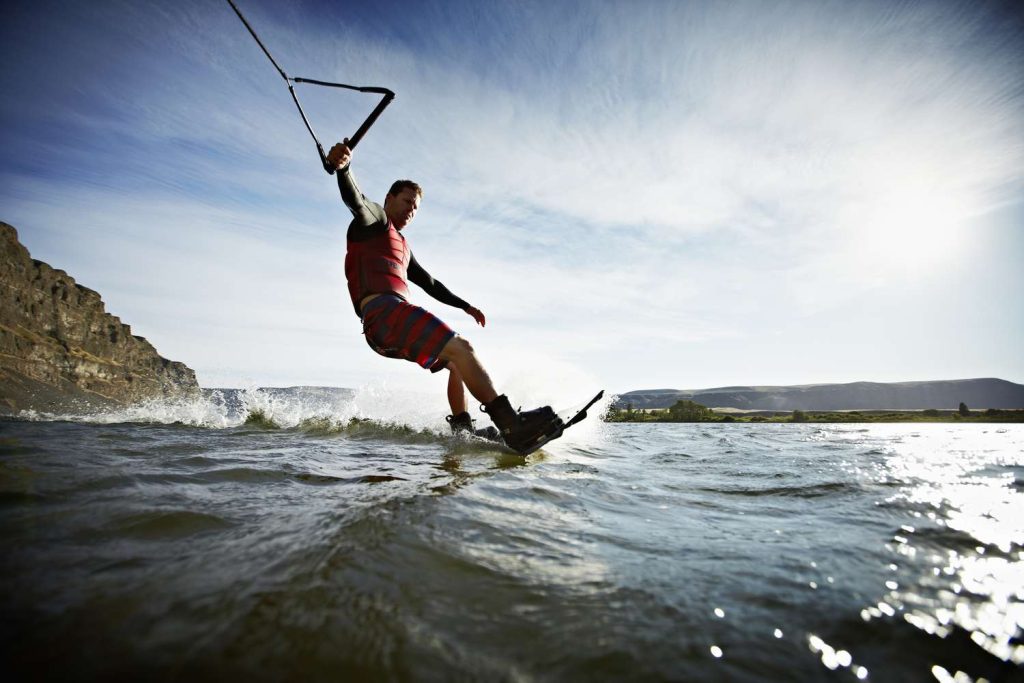
When it comes to choosing the perfect wakeboard binding setup, there are a few essential features that you should keep in mind. The right binding setup can significantly impact your performance on the water, giving you the stability and control needed for an exhilarating ride. From the comfort of the bindings to the adjustability and responsiveness, this article will guide you through the key elements to consider when selecting your wakeboard binding setup. So, whether you’re a beginner or an experienced rider, let’s dive into the essential features that will take your wakeboarding experience to new heights.
1. Boot Type
When it comes to wakeboard bindings, one of the first things you need to consider is the boot type. There are two main options to choose from: closed toe and open toe.
Closed Toe
Closed toe bindings are known for providing a snug and secure fit. With the toe area fully enclosed, they offer great protection and support for your feet. These bindings are particularly popular among advanced riders who often perform tricks and jumps, as they offer enhanced control and responsiveness. Closed toe bindings also help to keep your feet warm, making them a great choice for colder water conditions.
Open Toe
On the other hand, open toe bindings are more versatile and accommodating when it comes to sizing. Unlike closed toe bindings, they do not have a fully enclosed toe area, allowing for more flexibility in terms of foot size. Open toe bindings are ideal for individuals with growing feet or for riders who want to share their bindings with friends or family members with different foot sizes. These bindings also offer better airflow, keeping your feet cool and comfortable in warmer weather.
2. Size and Fit
When selecting wakeboard bindings, it’s crucial to ensure proper sizing and fit. Ill-fitting bindings can lead to discomfort, reduced performance, and even injury. Pay attention to the following factors:
Proper Sizing
Wakeboard bindings are typically available in standard shoe sizes. It’s essential to choose bindings that match your shoe size to ensure a comfortable and secure fit. Most manufacturers provide a size chart to help you determine the appropriate sizing. It’s worth noting that some brands may run larger or smaller, so it’s always a good idea to try them on or read customer reviews before making a purchase.
Adjustability
While proper sizing is important, having adjustability options in your bindings is beneficial. The ability to customize the fit allows you to fine-tune the bindings to your specific needs and preferences. Look for bindings with adjustable straps, lacing systems, or even removable liners that can be heat-molded to your feet for a personalized fit.
Comfort
Comfort is key when spending hours out on the water. Look for bindings that offer ample padding and cushioning in the footbed, ankle, and heel areas. A comfortable pair of bindings will provide support and minimize the risk of fatigue, allowing you to ride for longer periods without discomfort.
Snug Fit
A snug fit is essential for a secure and responsive ride. You want your feet to feel locked-in without any excess movement. Look for bindings that come with features like heel hold-down systems or molded overlays that help keep your foot securely in place. It’s also important to ensure that the bindings provide adequate support and stability to prevent any unwanted ankle or foot movements during your ride.

This image is property of wakepullcarve.com.
3. Flexibility
The flexibility of wakeboard bindings plays a significant role in your overall performance and comfort on the water. Consider the following aspects:
Stiffness
Bindings can range from stiff to soft, each offering unique advantages. Stiffer bindings provide better responsiveness and control, making them ideal for aggressive riders who want maximum power transfer and precise maneuvers. However, they may be less forgiving during landings and can feel less comfortable for beginners or those who prefer a more relaxed riding experience.
Flex Patterns
The flex pattern of a binding refers to how much the binding allows your foot to flex forward or backward. It affects your ability to initiate turns, edge control, and pop off the wake. Softer flex bindings offer more natural foot movement and better flexibility, making them a preferred choice for riders who prioritize comfort and a playful riding style. Intermediate riders may benefit from bindings with a medium flex that strike a balance between responsiveness and comfort.
4. Closure System
The closure system is crucial for keeping your feet secure and preventing any unwanted movement within the bindings. Wakeboard bindings generally offer three main closure options:
Traditional Laces
Traditional lace-up closure systems provide a customizable fit and allow for excellent adjustability. With traditional laces, you have the freedom to tighten or loosen specific areas of the bindings to your liking. This makes them a popular choice for riders who want unparalleled customization options and a classic aesthetic. However, it’s worth noting that traditional laces may require more time and effort to put on and take off compared to other closure systems.
Velcro Straps
Velcro straps, also known as hook-and-loop closure systems, provide quick and easy entry and exit. They offer a secure yet adjustable fit, allowing you to fine-tune the tightness of the bindings. Velcro straps are particularly favored by riders who value convenience and prefer a hassle-free setup. However, some may find that the grip of the Velcro diminishes over time compared to other closure options.
Boa System
The Boa system is a cutting-edge closure system that utilizes a dial and cables to tighten or loosen the bindings. With a simple twist of the dial, you can quickly achieve a precise and consistent fit. The Boa system provides excellent convenience and allows for on-the-fly adjustments, even while riding. While it may require a higher initial investment, the Boa system offers unparalleled convenience and reliability, making it a popular choice among riders of all skill levels.

This image is property of www.precisionmarine.com.au.
5. Baseplate
The baseplate of wakeboard bindings is the foundation that connects your bindings to the wakeboard. Consider the following factors when evaluating the baseplate:
Materials
Baseplates are commonly made from materials such as plastic, composite, or aluminum. Plastic baseplates are lightweight, flexible, and budget-friendly, making them a popular choice for beginners or riders on a budget. Composite baseplates offer a good balance of weight, durability, and responsiveness and are often found in mid-range bindings. Aluminum baseplates are the most durable and rigid option, providing excellent power transfer and responsiveness, but they tend to be more expensive.
Flexibility
The flexibility of the baseplate affects your ability to transfer energy from your legs to the wakeboard. Stiffer baseplates offer better energy transfer, providing a more responsive and powerful ride. On the other hand, more flexible baseplates offer better shock absorption, making landings smoother and reducing the risk of discomfort or injury. Consider your riding style and preferences when choosing between a stiffer or more flexible baseplate.
Mounting Options
Baseplates typically feature multiple mounting options to accommodate various stance widths and angles. Look for bindings that offer a wide range of mounting options to ensure compatibility with your wakeboard. This versatility allows you to fine-tune your stance for optimal comfort and performance.
6. Cushioning and Impact Absorption
Wakeboarding can be tough on your feet and joints, so it’s important to consider the cushioning and impact absorption capabilities of your bindings. Look for the following features:
Footbed Material
The footbed material plays a significant role in shock absorption and overall comfort. EVA foam footbeds are commonly used in wakeboard bindings due to their excellent cushioning properties and ability to dampen impacts. Look for bindings that offer ample footbed padding to minimize any discomfort or fatigue during your ride.
Heel and Ankle Padding
Heel and ankle padding provide additional support and protection for these sensitive areas. Look for bindings that feature thick padding or molded panels in the heel and ankle regions to enhance comfort and reduce the risk of pressure points or hotspots.
Shock Absorption
Bindings with built-in shock absorption features can greatly reduce the impact on your feet and knees when landing jumps or tricks. Look for bindings that utilize technologies such as air pockets, gel inserts, or specially designed cushioning systems to provide enhanced shock absorption. These features can make a noticeable difference in terms of comfort and injury prevention.

This image is property of www.jobesports.com.
7. Compatibility
Compatibility is paramount when it comes to wakeboard bindings. Consider the following aspects:
Binding-to-Board Compatibility
Ensure that the bindings you choose are compatible with your wakeboard’s mounting system. Most wakeboards use either a 6-inch or 8-inch mounting system, so make sure your bindings have the corresponding hole pattern. Additionally, check if any additional hardware, such as screws or washers, are required for proper installation.
Boot-to-Binding Compatibility
If you already own wakeboard boots or plan to purchase them separately, make sure they are compatible with the bindings you choose. Some bindings offer specific features or technologies designed to work seamlessly with certain boot models. It’s important to verify compatibility to ensure optimal performance and functionality.
8. Adjustability
Having the ability to adjust various aspects of your wakeboard bindings allows you to customize your ride to suit your riding style and preferences. Consider the following adjustability options:
Stance Width
The stance width refers to the distance between the two bindings on the wakeboard. Being able to adjust the stance width allows you to find the optimal position for your body type and riding style. Look for bindings that offer multiple mounting options or adjustable inserts to provide flexibility in adjusting the stance width.
Highback Rotation
The highback is the vertical plate that runs behind your lower leg and provides support and control. Highback rotation refers to the ability to adjust the angle of the highback. Being able to rotate the highback allows you to customize the forward lean to your liking, enabling better control and responsiveness. Look for bindings that offer highback rotation options for greater customization.
Forward Lean
Forward lean refers to the angle at which the highback is tilted forward. Adjusting the forward lean can greatly affect your riding style and preference. Some riders prefer a more upright position for a looser and more playful feel, while others prefer a forward lean for increased responsiveness and edge control. Look for bindings that offer forward lean adjustment to tailor your riding experience.

This image is property of www.jobesports.com.
9. Durability
Durability is a key factor to consider when investing in wakeboard bindings. Look for the following features to ensure a long-lasting and reliable product:
Materials
Pay attention to the quality and durability of the materials used in the construction of the bindings. Look for bindings made from high-quality materials that are resistant to wear and tear. Reinforced plastic or composite materials are often used to enhance durability without sacrificing performance.
Stitching
Inspect the stitching on the bindings to ensure it is strong and well-constructed. Reinforced and double-stitched seams offer increased durability and can withstand the rigors of wakeboarding. Poorly stitched bindings may have a shorter lifespan and are more prone to premature wear or failure.
Reinforcements
Additional reinforcements in high-stress areas such as the toe, heel, and ankle regions can significantly increase the durability and lifespan of the bindings. Look for bindings that feature reinforced panels, overlays, or abrasion-resistant materials in these areas for added protection against impact or abrasion.
10. Price
Price is an important consideration for many wakeboarders. Consider the following factors when evaluating the price of wakeboard bindings:
Budget-friendly Options
If you’re on a tight budget, don’t worry – there are plenty of affordable wakeboard bindings available that still offer excellent performance and durability. Look for bindings that prioritize the essential features mentioned earlier while keeping costs down through more economical materials or simplified designs.
Quality vs. Cost
While it can be tempting to go for the cheapest option, keep in mind that investing in higher-quality bindings can provide better performance, comfort, and durability in the long run. Take into account factors such as the materials used, build quality, brand reputation, and customer reviews when evaluating the cost of wakeboard bindings. Consider it as an investment in your riding experience and safety.
In conclusion, selecting the right wakeboard binding setup involves considering various factors such as boot type, size and fit, flexibility, closure system, baseplate, cushioning and impact absorption, compatibility, adjustability, durability, and price. By carefully evaluating each aspect and considering your individual preferences and riding style, you can find the perfect bindings that will enhance your wakeboarding experience and keep you riding comfortably and confidently on the water.

This image is property of www.tripsavvy.com.






